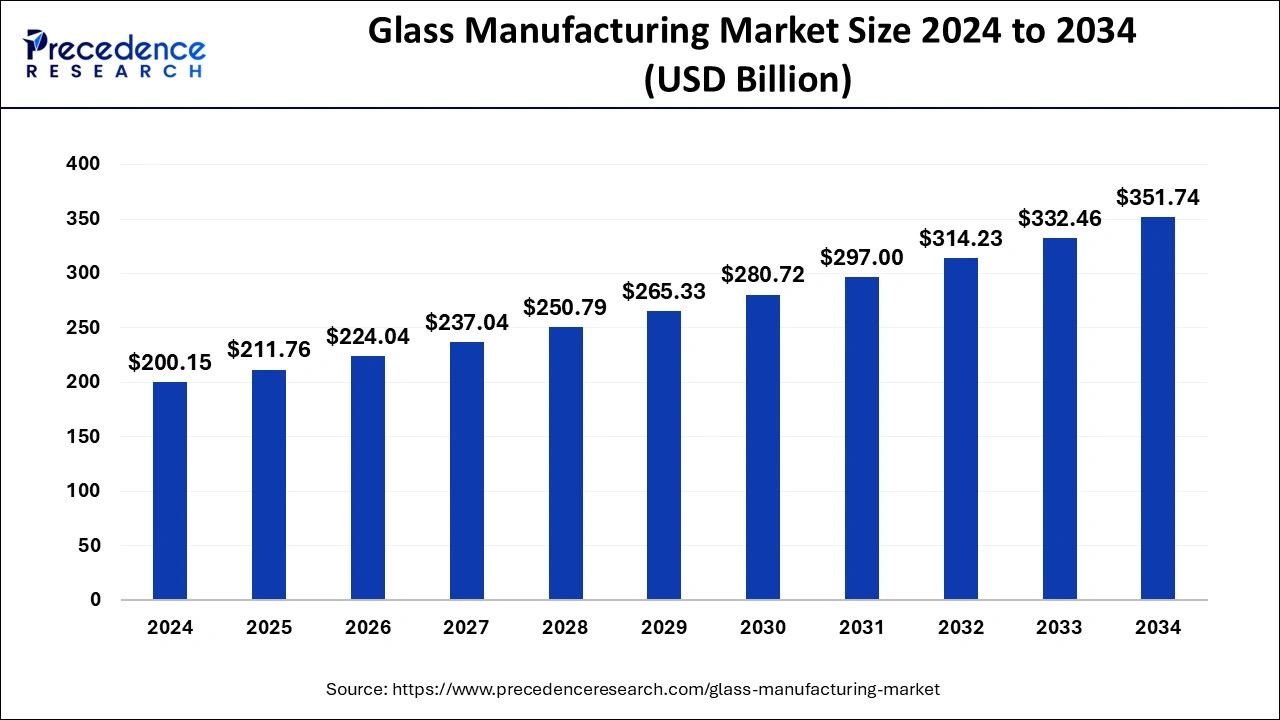Glass Manufacturing Market Size to Attain USD 351.74 Bn by 2034
The glass manufacturing market size accounted for USD 200.15 billion in 2024 and is projected to be attain around USD 351.74 billion by 2034, with a CAGR of 5.8%.

Get Sample Copy of Report@ https://www.precedenceresearch.com/sample/1125
Key Points
- With a 40% market share in 2024, Asia Pacific maintained its leadership in the global market.
- The container glass segment remained the top contributor by product, accounting for 50% of the market in 2024.
- The automatic segment registered the highest application-based market share of 45% in 2024.
Also Read@ https://www.precedenceresearch.com/artificial-intelligence-market
Market Dynamics
Market Drivers
The global glass manufacturing market is expanding due to the increasing use of glass in modern construction, renewable energy, and consumer goods. The rising awareness of energy-efficient solutions has led to a surge in demand for insulated glass in green buildings.
The automotive industry is another significant driver, with manufacturers integrating advanced glass technologies for enhanced safety and aesthetics. Additionally, the preference for glass over plastic in packaging due to environmental concerns is boosting the market for container glass.
Opportunities
Innovations in smart glass technology, including electrochromic and thermochromic glass, present lucrative opportunities for the market. The rising adoption of solar energy is driving the demand for solar glass, which plays a crucial role in photovoltaic panels.
Additionally, the push for sustainable construction practices has opened new opportunities for recycled and high-performance glass. Developing economies in Southeast Asia and Africa are experiencing increased demand for glass in commercial and residential construction, further driving market growth.
Challenges
The glass manufacturing industry faces challenges such as high initial investment in production infrastructure and compliance with stringent environmental regulations. The energy-intensive nature of glass production leads to high operational costs, making it crucial for manufacturers to invest in energy-efficient technologies.
The availability of raw materials and supply chain disruptions also impact the industry’s stability. Furthermore, the fragility of glass requires specialized transportation and handling solutions, increasing logistics costs.
